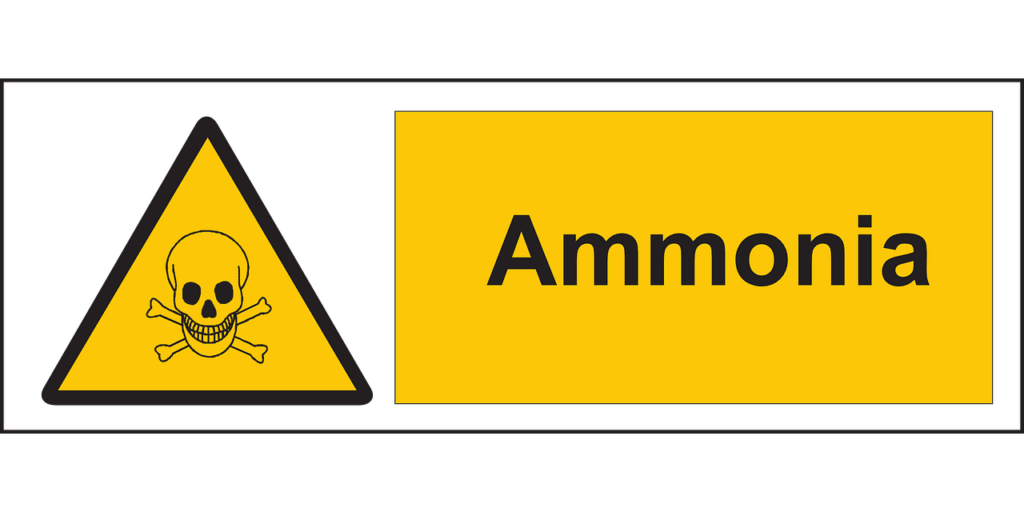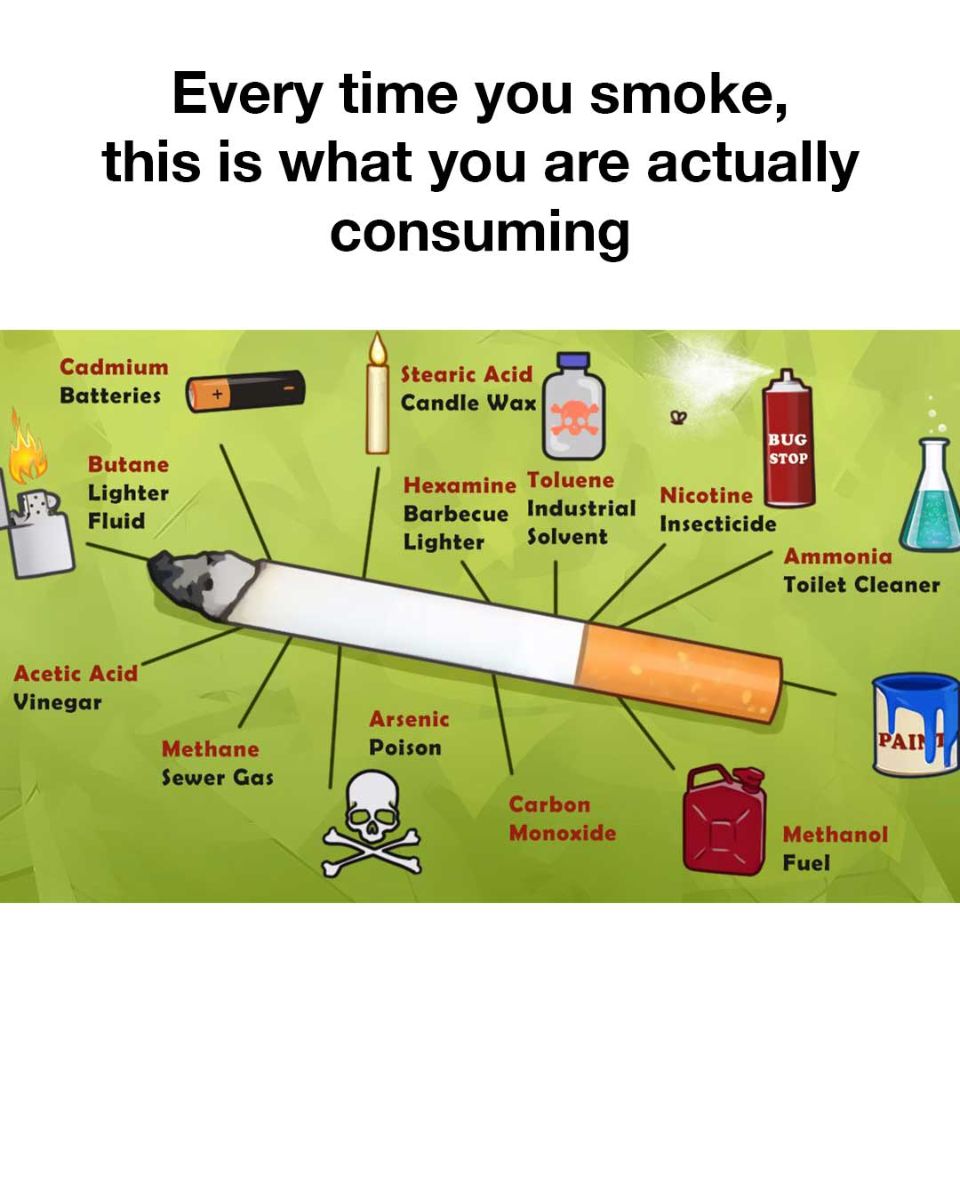Smoking is an act that has been ingrained in human culture for centuries. However, modern scientific understanding has revealed the true dangers of this habit. Cigarettes are not just a source of nicotine; they are a delivery system for a plethora of harmful substances. This article delves into the toxic chemicals found in cigarettes and the health consequences of smoking, including the dangers of secondhand and thirdhand smoke.
1. Cadmium: The Battery Element

Cadmium is a heavy metal used in battery production. It is highly toxic and can cause severe kidney damage and is classified as a carcinogen. Inhaling cadmium from cigarette smoke leads to its accumulation in the body, posing significant health risks.1
- Other Sources: Batteries, paints, and coatings.
2. Butane: Lighter Fluid

Butane is a highly flammable gas used in lighter fluid. It contributes to the toxicity of cigarette smoke and can cause respiratory issues and systemic effects when inhaled.
- Other Sources: Gas for lighters, aerosols, and refrigerants.
3. Methane: Sewer Gas

Methane, commonly found in sewer gas, is also present in cigarette smoke. Although less toxic than other chemicals on this list, its presence adds to the harmful cocktail of gases inhaled by smokers.
- Other Sources: Natural gas, landfills, and swamps.
4. Arsenic: The Poison

Arsenic is a well-known poison used in pesticides and industrial applications. Chronic exposure to arsenic, even in small amounts, can lead to cancer, cardiovascular diseases, and diabetes.
- Other Sources: Pesticides, wood preservatives, and industrial chemicals.
5. Ammonia: Toilet Cleaner

Ammonia, found in household cleaners, is used in cigarettes to enhance nicotine absorption. Inhaling ammonia can irritate the respiratory system and worsen conditions like asthma.
- Other Sources: Cleaning products, fertilizers, and refrigeration systems.
6. Methanol: Rocket Fuel

Methanol is a toxic alcohol used as a fuel in rockets, as well as other high-end vehicles and weapons. Exposure to methanol can cause metabolic acidosis, neurological damage, and even death.
- Other Sources: Windshield washer fluid, antifreeze, and solvents.
7. Hexamine: Barbecue Lighters

Hexamine, used in barbecue lighters, releases toxic fumes when burned. Inhaling hexamine through cigarette smoke can cause respiratory and systemic toxicity.
- Other Sources: Camping fuel tablets, industrial adhesives, and antiseptics.
8. Stearic Acid: Candle Wax

Stearic acid is a fatty acid used in candles. Although less toxic, inhaling it contributes to the overall harmful effects of smoking.
- Other Sources: Cosmetics, soaps, and food additives.
9. Acetic Acid: Vinegar’s Component

Acetic acid, responsible for the smell and taste of vinegar, is also present in cigarette smoke. Prolonged inhalation can cause respiratory issues.
- Other Sources: Vinegar, food preservatives, and industrial chemicals.
10. Toluene: Industrial Solvent

Toluene is used in paint thinners and nail polish removers. Inhaling toluene can cause dizziness, headaches, and neurological damage.
- Other Sources: Paints, adhesives, and chemical manufacturing.
11. Nicotine: The Addictive Agent

Nicotine is the primary addictive substance in cigarettes. It stimulates dopamine release, creating a sense of pleasure and reward. Nicotine addiction leads to increased tolerance and dependence, making it difficult to quit.2
- Other Sources: Insecticides, nicotine replacement therapies.
12. Carbon Monoxide: Poisonous Gas

Carbon monoxide, a result of burning tobacco, reduces the blood’s oxygen-carrying capacity, causing cardiovascular issues and increased risk of heart disease.
- Other Sources: Car exhaust fumes, faulty gas appliances, and fires.
Health Consequences of Smoking

Smoking leads to numerous health problems, including cancer, heart disease, and respiratory illnesses. The chemicals in cigarette smoke damage nearly every organ in the body, reducing overall life expectancy.3
Secondhand and Thirdhand Smoke

Secondhand smoke is just as harmful as smoking directly. It contains many of the same toxic chemicals, increasing the risk of cancer, heart disease, and respiratory problems for nonsmokers.4
Thirdhand smoke refers to the pollutants that settle on surfaces and linger long after the smoke has cleared. These chemicals pose a potential health hazard, especially to children, and can be difficult to remove.
Best Ways to Quit

Quitting smoking is challenging but achievable. Here are some effective methods:
- Nicotine Replacement Therapy (NRT): Includes patches, gum, and lozenges to reduce withdrawal symptoms.
- Medications: Prescription medications like bupropion and varenicline can help reduce cravings and withdrawal symptoms.
- Counseling and Support Groups: Behavioral therapy and support groups provide the emotional support needed to quit.
- Lifestyle Changes: Regular exercise, healthy eating, and stress management techniques can support the quitting process.
Understanding the full spectrum of harmful substances in cigarettes underscores the gravity of smoking’s impact on health. Awareness of these dangers can serve as a powerful deterrent and motivate smokers to seek help in quitting.
